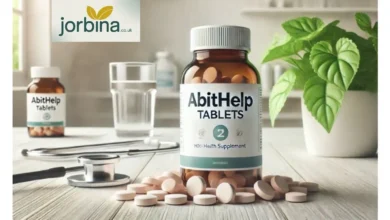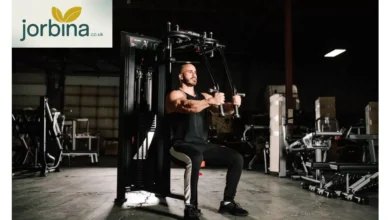Physical Therapy: Your Complete Guide to Healing and Strength

Have you ever caught yourself wishing your body could just “reset” after an injury or nagging pain? Maybe you’ve seen a teammate recover from a torn ligament and wondered how they got back on the field so quickly. The answer in many cases is physical therapy.
Physical therapy isn’t just for elite athletes or people rehabbing after surgery. It’s for anyone who wants to move better, hurt less, and build confidence in their body. Let’s walk through what it is, how it works, the equipment involved, and how it can fit into your life.
Understanding Physical Therapy
At its core, physical therapy is the science of helping your body heal through movement. It uses exercise, hands-on techniques, and sometimes technology to restore normal function. A physical therapist, sometimes called a PT, studies how you walk, sit, lift, and reach. They notice what’s stiff, what’s weak, and what’s not working as it should.
From there, they create a plan to bring everything back into balance. That might mean stretching tight muscles, strengthening weaker ones, and showing you how to move in ways that don’t strain your joints.
The goal isn’t just short-term relief. Physical therapy aims for long-term strength and mobility so that your problem doesn’t keep coming back.
Physiotherapy vs. Physical Therapy
Here’s a question that pops up a lot: What is physiotherapy vs. physical therapy? The two terms are basically interchangeable. In Canada, the UK, and many other countries, the word “physiotherapy” is common. In the United States, “physical therapy” is the go-to phrase.
Both focus on the same thing: helping you recover, prevent injury, and improve how you move. Some regions might have small differences in training programs, but in practice, they do the same job. You might even see the phrase “physiotherapy” or “physical therapy” used to cover both terms at once.
Why It Matters
Pain can quietly steal your energy and focus. Limited mobility can make even simple tasks frustrating. This is where physical therapy steps in. Instead of masking pain with quick fixes, it digs into why the pain is there in the first place.
Think of it like solving a mystery: if your shoulder hurts, a therapist will look at how you sit at your desk, how you lift things, and even how your spine moves. Fixing the root cause means your pain doesn’t just come back later.
And here’s the bigger picture: stronger muscles and better movement patterns lower your risk for future injuries. That means fewer setbacks, less time stuck on the sidelines, and more time living your life.
Physical Therapy Tools for Muscles

When you picture physical therapy, you might imagine a room filled with equipment—and you’d be right. These tools aren’t just props; they play a role in your recovery.
Here are some you might encounter:
- Resistance Bands: Perfect for controlled strength-building exercises.
- Foam Rollers: Help loosen up tight muscles and improve circulation.
- Exercise Balls: Build core strength and balance in a fun, challenging way.
- TENS Units: Small devices that use gentle electrical pulses to calm pain signals.
- Ultrasound Machines: Deliver sound waves to deep tissues to promote healing.
- Balance Boards: Train coordination and prevent falls.
Many clinics post a physical therapy equipment catalog online, so you can preview what’s available before your visit. Some even offer a downloadable physical therapy equipment list PDF if you want to keep track of what’s used in your plan.
How a Session Works
Walking into your first appointment might feel a little intimidating, but here’s what usually happens.
First, you’ll have an evaluation. The therapist asks questions about your pain or injury, watches how you move, and may run simple strength or flexibility tests. This part is crucial—it helps them figure out the true cause of the problem.
Then the treatment begins. You might start with gentle stretching or guided movements. Over time, exercises progress to build strength and restore full function.
Manual therapy is common, too. That’s where the PT uses their hands to mobilize joints, ease stiff areas, or help a muscle relax. Some clinics also add heat, cold, or electrical stimulation if needed.
Types of Physical Therapy
Not all physical therapy looks the same. There are different specialties designed for different needs.
- Orthopedic Therapy: For injuries to bones, joints, ligaments, and muscles. Think ankle sprains, torn ACLs, or post-surgery rehab.
- Neurological Therapy: Designed for people recovering from stroke, brain injuries, or conditions like multiple sclerosis.
- Pediatric Therapy: Focuses on children with developmental delays or conditions that affect movement.
Athletes may work with specialists who follow guidelines from the International Federation of Sports Physical Therapy, which sets high standards for sports-specific rehab around the world.
At-Home Exercises: Where Progress Happens
The work you do outside the clinic matters just as much as what happens during an appointment. Most therapists will give you a home program with specific exercises. Doing them consistently is where major improvements happen.
Skipping them slows recovery and can undo the progress you made during sessions. Doing them faithfully builds strength faster and teaches your body to move in healthier ways.
How to Choose a Clinic
Not all clinics are the same. A good physical therapy website should show you what services they offer, introduce the therapists, and explain their approach. Some even have video libraries you can follow from home.
Look for a clinic that listens, explains things clearly, and helps you feel comfortable. The relationship matters; it’s easier to stay motivated when you trust your PT.
Benefits Beyond Injury
Here’s something many people don’t realize: physical therapy isn’t only for when you’re hurt. It can improve posture, fight off stiffness from sitting too long, and even sharpen your balance so you’re less likely to fall.
Athletes use it to boost performance. Office workers use it to stop recurring neck pain. Older adults use it to stay independent.
In short, if you move, physical therapy can help you move better.
FAQs
What does physical therapy do?
It helps you regain normal movement, relieve pain, and build strength. It also teaches you ways to protect your body and prevent future injuries.
What’s the difference between physiotherapy and physical therapy?
There are two names for the same practice. Physiotherapy is common internationally; physical therapy is used in the U.S.
What is the role of physical therapy in recovery?
It speeds up healing, restores normal movement, and lowers the chance of reinjury.
What are the three types of physical therapy?
Orthopedic, neurological, and pediatric are three of the most common.
What is the difference between PT and PTA?
PT stands for physical therapist, who creates your treatment plan. PTA stands for physical therapist assistant, who helps you carry out that plan under the PT’s supervision.
Final Thoughts
Physical therapy is more than just a list of exercises. It’s a path back to strength, confidence, and freedom of movement. It’s about finding the root of pain, fixing it, and building a body that can handle what life throws at it.
If you’re struggling with pain, stiffness, or an injury that won’t heal, consider scheduling an appointment. Check a clinic’s physical therapy equipment list or catalog on their website so you know what tools they use. The sooner you start, the sooner you’ll notice a difference—and the faster you can get back to doing what you love.



